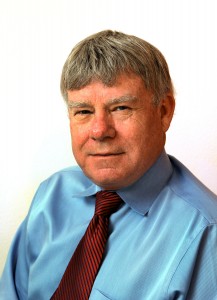
Oklahoma Watch is here!
Tom Lindley
Oklahoma Watch is a Knight Community Information Challenge winner that aims to bring attention and action on issues such as the incarceration of women through independent journalism in partnership with established news organizations around the state.
It officially launches Jan. 30 but is already publishing via a new website and its partner publications. We checked in this week for a status report from editor Tom Lindley.
Q. When did the site launch?
A. While our official “Women in Prison” project launch date has been set for Jan. 30, we unofficially launched Oklahomawatch.org Dec. 2 to coincide with the publication of a three-part newspaper print/online series that was produced in conjunction with Oklahoma’s two major daily newspapers and distributed to the rest of the state’s newspapers.
The series focused on the state’s prison overcrowding and budgetary crisis and was meant to give lawmakers something to think about as they neared the deadline for filing bills for the 2011 legislative session. We felt it was important to put the prison problem in context before the bill-filing deadline and legislative agenda was set in stone, in part so it couldn’t be said that our upcoming efforts to examine the female prison problem came too late to pass legislation in 2011. Q. What’s been the impact? A. Although it’s too early to evaluate how many people are talking about us and our work, the state’s new leadership team has expressed a willingness to find alternatives to incarceration, no small feat in a state that has led the nation 14 of the past 15 years in locking up women. And while we have yet to fully brand or promote our site, traffic has been good. More importantly, we are achieving page view times in the 6-minute range for our in-state audience and 5 minutes for others.
Q. What are your next steps?
A. Since December, we have been adding functionality to our web site, which will be hosted by the University of Oklahoma Gaylord College of Journalism and Mass Communication, in preparation for our full-scale multi-media launch date. We have put staff in place to moderate our Facebook and Twitter social media sites and will mount an innovative social media strategy. We also will recruit volunteers to help us brand our web site and develop a community outreach program.
Of course, all of our efforts are centered around the journalism. We have an important story to tell and we want to get it right and make it so compelling that it serves as a call to action for the state. To achieve those goals, we have mapped out an aggressive array of coverage that will feature new content being rolled out in print and online for 12 consecutive weeks. The stories, still photography and videos will be generated by Oklahoma Watch, Tulsa World and Oklahoman staff writers and will be shared with member newspapers in the Oklahoma Press Association.
In addition, we are partnering with Griffin Communications (which owns TV stations in Tulsa and Oklahoma City) and OETA (the statewide public television network) to produce a series of shows that may range from a 30-minute documentary, to investigative pieces, to public forums and town hall meetings.
Finally, we hope to partner with the state’s network of NPR affiliates on programming that will reach yet another segment of the audience.
From there, we will continue to report on the issue for as long as it takes to reduce the extent of the problem.
Q. In addition to your media partners, you are working with University programs?
A. Another important layer to our project involves our collaboration with our university partners. Our main base of operation will be at the Gaylord College of Journalism and Mass Communication, where we will benefit from faculty and student involvement in our projects and have access to state-of-the art technology. As a pilot program, we also are partnering with a master’s level research class that specializes in women and gender issues at the University of Tulsa. They will provide field research for us and help us with our community engagement piece. We hope to use this pilot as a model of how we can tap into the broader academic setting for upcoming projects.
Q. What’s the most surprising thing you’ve learned so far?
Well, since Oklahoma Watch is barely three months old, I guess the most surprising – or scariest – thing I’ve learned is that time goes by too fast, particularly when you are in the start-up phase and don’t have a blueprint to follow. Given the competitive nature of the media world, the overwhelming amount of cooperation and support we have received from our media partners also has surprised me a little. Our media partners, which include the major players in the state, all are willing to share content, share resources and share the credit in the strong belief that it will be result in meaningful journalism.
I should add that this unprecedented statewide collaboration extends to our funders in Oklahoma City and Tulsa. They are fully engaged in providing the time and support we need to establish ourselves, while maintaining their editorial distance. The major funders are the Tulsa Community Foundation, George Kaiser Family Foundation, Ethics and Excellence in Journalism Foundation in addition to Knight.
Oklahoma Watch is governed by a 13-member board of directors, which is heavily represented by the media and non-profit sectors. All editorial decisions will be made independently by the editor. It’s way too early to call our journalistic model a success, but I do feel lucky to be a part of it.
The Knight Community Information Challenge will accept applications again beginning Jan. 18. Stay tuned.
Recent Content
-
Community Impactarticle ·
-
Community Impactarticle ·
-
Community Impactarticle ·


